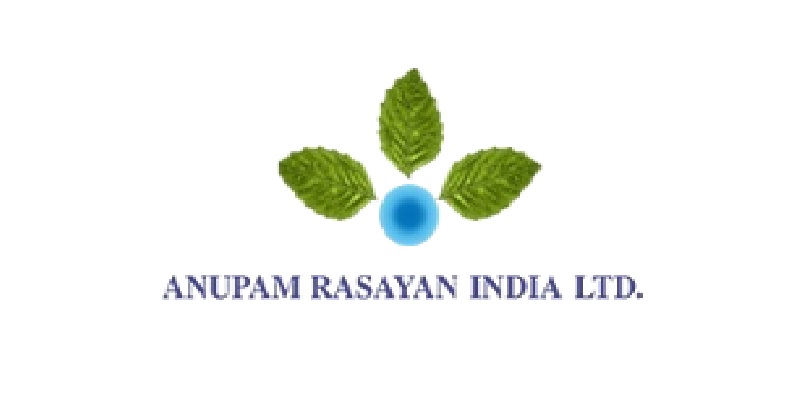Schedule a Call Back
Revolutionising financing for small and medium enterprises
 Articles
Articles- Apr 29,24

The micro, small and medium enterprise (MSME) sector forms the cornerstone of India’s economic growth, contributing to 30 per cent of the country’s gross domestic product (GDP), 35 per cent of the manufacturing output and 40 per cent-45 per cent of its exports. Recognising the significant role of the MSME sector, Finance Minister Nirmala Sitharaman, during her Interim budget speech in parliament in February 2024, emphasised the sector’s importance in India’s journey towards becoming a $ 5-trillion economy in near future and $ 7 trillion economy by 2030.
However, the exclusion of many MSMEs from formal lending ecosystems inhibits their growth. According to a report by the Reserve Bank of India (RBI) expert committee on MSMEs, the sector has an estimated credit gap of $ 530 billion. A majority of MSMEs do not have access to sufficient credit and liquidity required for daily working capital needs.
This is where fintechs can play a bigger role in terms of inclusivity, sustainability, and customer-centricity. They bring in innovation in the financial services ecosystem and unlocks credit access for all tailoring products, and services as per MSME needs and preferences.
Navigating the challenges with innovative solutions
The MSME base in India is projected to grow from 6.30 crore to an astounding 7.50 crore units, presenting both vast opportunities and unexpected challenges, particularly in the world of financing. Business challenges for MSMEs often revolve around market competition, scalability, and innovation. Access to credit remains a persistent issue, with formal sources of credit reaching only about 39 per cent of MSMEs, leaving a substantial gap in financing accessibility. This challenge is further aggravated by the absence of easily available and accessible collateral-free sources of credit. Working capital shortages impede day-to-day operations and hinder growth opportunities for MSMEs. Moreover, delayed payments from customers disrupt cash flow, leading to liquidity crunches and hampering business sustainability.
For new players entering the SME landscape, navigating financing options can be tricky. Traditional lenders often require extensive collateral and a proven track record, making it challenging for startups and emerging businesses to secure funding. Here innovative financing solutions tailored to the needs of early-stage enterprises are gaining traction.
One such innovative solution to address cash flow challenges for MSMEs is TReDS. This electronic platform allows businesses to obtain immediate cash by selling their accounts receivable to a third party at a discount. This works by discounting unpaid invoices, enabling SMEs to access much-needed liquidity swiftly. The liquidity can then be utilised to meet operational expenses, invest in growth initiatives, or seize market opportunities. This offers a flexible and efficient way to manage cash flow, particularly for businesses with long payment cycles. As an alternative to traditional loans, TReDS offers quick access to funds without incurring additional debt. Moreover, it enhances financial visibility and stability, enabling SMEs to navigate through uncertain economic conditions.
In its current form, TReDS primarily serves MSME suppliers of large corporates, leaving smaller players in the lower tiers of the supply chain in need of quicker capital infusion. Recently the RBI has approved a plug and play deep tier financing to assist small MSME sellers in obtaining cash-flow-based financing. This inclusive approach offers a ‘win-win situation’ for both suppliers and buyers, ensuring stable cash flows and reducing the risk of disruptions in the domestic and global supply chains.
Expanding access to tier 2 and 3 MSMEs with deep tier financing
Deep-tier supply chain financing bridges the financing gap for MSMEs by extending affordable funding solutions throughout the supplier ecosystem. Financial institutions use the fintech platform to offer financing beyond large suppliers, reaching down to tier two, three, and beyond MSMEs. By developing a linkage within the supply chain, deep-tier financing promotes transparency and stability while empowering MSMEs to address trade financing shortfalls. This innovative model enhances cash flow and strengthens MSMEs' positions within the supply chain, enabling them to access quick credit and facilitating growth initiatives at scale.
Inhouse data analytics tools, such as Credit Analytic Engines (CAE), facilitate the expansion of SCF to smaller enterprises by analysing vast amounts of data to map the behavioural patterns and business transactions. This enables financial institutions to assess creditworthiness and manage risks effectively. By leveraging data analytics, lenders can make informed decisions, extend financing to underserved MSMEs, and create inclusive economic growth.
Alternate solutions for SME financing
In addition to invoice discounting, supply chain finance, and alternative funding sources, several other innovative solutions are reimagining SME financing. As India's MSME sector progresses towards significant expansion, the demand for innovative financial solutions becomes increasingly pronounced. Peer-to-peer lending platforms, for instance, connect borrowers directly with investors, bypassing traditional financial intermediaries. This democratized approach to lending offers competitive interest rates and streamlined application processes, making it highly appealing for SMEs in need of swift access to capital.
Final thoughts
Consistent access to finance is imperative for driving economic growth, building entrepreneurship, and promoting inclusivity. By addressing cash flow challenges, expanding access to supply chain finance, and exploring innovative financing options, we can unlock the full potential of small and medium enterprises. As technology continues to evolve and financial ecosystems become more interconnected, the future of SME financing holds exciting possibilities for businesses worldwide. These advancements will drive collaboration between stakeholders, thereby creating a more resilient and vibrant ecosystem for small and medium enterprises to flourish.
About the author:
Sundeep Mohindru is a Promoter & Director at M1xchange. M1xchange TReDS is a digital marketplace to sell the receivables to banks/NBFC set up under the approval of Reserve Bank of India (RBI) to facilitate the discounting of invoices and bills of exchange on a PAN India basis.
Related Stories

Dormer Pramet Unveils Advanced Force Solid Carbide Drills for Modern Manufacturing
The Force drill series reflects the company’s mission to provide certainty at every turn.
Read more
India’s Expanding Nuclear Ambitions and the Emerging Market for Small Reactors
As India’s Vision 2047 sets a target of 100 GW of nuclear capacity, the government is shifting to distributed nuclear generation by deploying smaller reactors across multiple locations, writes R J..
Read more
Synopsys and 3D Engineering Open Design Center at MECF in Pune
The facility signifies a significant step in accelerating access to advanced simulation technologies for MSMEs.
Read moreRelated Products

Fanless Industrial Pc for Smart Manufacturing
CONTEC Launches BX-M4600 Series - Fanless Industrial PC for Smart Manufacturing.















